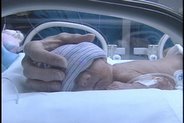New ideas in healthcare design, especially the ED, are essential to meet the challenges of infectious disease:
In most scenarios, the emergency service will be a primary entry point into the health care system and other components of the system (inpatient beds,physician offices, and clinics) will also quickly reach saturation.
Of equal importance are the high-risk patients that present on a daily basis. “If you plan for these special-risk situations, it will help with interrupting the chain of transmission,” says Craig Feied, M.D., FACEP, director of the Institute for Medical Informatics, MedStar Health, Washington Hospital Center, Washington, D.C. “Traditional design does nothing to reduce risk.”
Disease can be spread through airborne particles, direct contact with an infected patient and contact with a surface (fomite) that harbors a reservoir of active virus or bacteria. Among these, airborne contamination and fomite contact have clear implications for health care facility design professionals.
Dr. Feied's comment "breaking the chain of transmission" is right on the money. We need to spread awareness that hand washing alone will not prevent the spread of disease. Additional measures of cleaning the environment, especially the airborne route of transmission are important links in the chain.
Technorati Tags


No comments:
Post a Comment